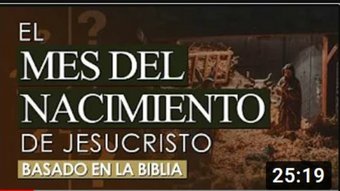El cómo yo he entendido la armonía musical. Entrega 01: una escala es más que una escala
10
About :
ESPAÑOL
Un gran abrazo a la comunidad Musical de HIVE, como lo es MUSIC, me siento muy contento de poderles traer esta sección titulada: El como yo he entendido la armonía musical. Siempre es un honor compartir mis aprendizajes, a parte de que una excelente forma de sistematizar las experiencias. En este proceso de profundización en la armonía que comenzó hace mas de un año, he tenido el acompañamiento de dos grandes amigos como lo son Jesod Bracho y Servio Romero, este último un excelente cantante e instrumentista que se encuentra bastante activo en el ámbito músical. Ahora bien, entrando en materia, la armonía musical es realmente hermosa, y es tan perfecta como las matemáticas, como Ingeniero de profesión veo que la armonía es hacer ingeniería en el maravilloso arte de la música.
ENGLISH
A big hug to the HIVE Musical community, as is MUSIC, I am very happy to bring you this section entitled: How I have understood musical harmony. It is always an honor to share my learning, as well as an excellent way to systematize experiences. In this process of deepening in harmony that began more than a year ago, I have been accompanied by two great friends such as Jesod Bracho and Servio Romero, the latter an excellent singer and instrumentalist who is quite active in the musical field. Now, getting into the subject, musical harmony is really beautiful, and is as perfect as mathematics, as an engineer by profession I see that harmony is engineering in the wonderful art of music.



Por lo amplio de todos estos conocimientos, y para que quede un material de gran utilidad y que sea aprovechable por todos los niveles, incluso desde un nivel básico en la música, he decidido segmentar esta sección “El cómo he entendido la armonía musical” en varios capítulos, en esta ocasión nos centraremos en las escalas, específicamente la escala de Do mayor y su relativo menor en sus tres presentaciones: natural, armónico y melódico. En el abordaje de las escales es trascendental comprender la noción de Tono y Semi – Tono; te aconsejo que logres entender esta noción en el instrumento. Para el caso de la guitarra tenemos lo siguiente:
Because of all this knowledge, and in order to have a very useful material that can be used by all levels, even from a basic level in music, I have decided to segment this section "How I have understood musical harmony" in several chapters, this time we will focus on the scales, specifically the C major scale and its relative minor in its three presentations: natural, harmonic and melodic. In the approach of the scales it is transcendental to understand the notion of Tone and Semi-Tone; I advise you to understand this notion in the instrument. In the case of the guitar we have the following:


Cada traste de la guitarra representa un semitono, es decir, la distancia tonal entre los dedos de la imagen anterior sería de un semitono, ahora bien , si quiero lograr un tono de distancia, uno de los dedos tendría que alejarse un traste más, En el piano esto es más didáctico aún; si no tienes un piano pueden dibujar una vista en planta de las teclas:
Each fret of the guitar represents a semitone, that is to say, the tonal distance between the fingers in the previous image would be one semitone, now then, if I want to achieve a tone of distance, one of the fingers would have to move one fret further away, In the piano this is even more didactic; if you do not have a piano you can draw a plan view of the keys:


Simplemente en el piano la distancia de cualquier tecla blanca con la tecla negra es un semitono, por lo tanto la distancia entre dos teclas blancas, siempre y cuando se encuentre una tecla negra entra ellas es de un tono. El piano nos ayuda a entender un concepto fundamental de la armonía, y es lo que yo domino los semitonos por excelencia, los cuales son entre las notas Mi y Fa, y las notas Si y Do, entre ellas simplemente no hay teclas negras. Estos semitonos justamente son los de la escala de Do Mayor, que se muestra a continuación, en una fotografía que tomé a mi pizarra:
Simply in the piano the distance of any white key with the black key is a semitone, therefore the distance between two white keys, as long as there is a black key between them is one tone. The piano helps us to understand a fundamental concept of harmony, and it is what I master the semitones par excellence, which are between the notes E and F, and the notes B and C, between them there are simply no black keys. These semitones are precisely those of the C major scale, shown below, in a photograph I took of my slate:

Esta escala de Do Mayor, es la mas sencilla puesto que la misma no tiene alteraciones. Nos indica la estructura tonal de toda escala mayor, es decir: Tono- Tono – Semitono – Tono – Tono – Tono – Semitono. Noten que los medios tono están entre el 3er y 4to grado, y el 7mo y 8vo grado. Y esto es una estructura que se replica en todas las escalas mayores; sin embargo para no hacer el estudio tan extenso, nos centraremos en Do Mayor. Justamente el sexto grado de esta escala corresponde a La, y el mismo es el relativo menor de la tonalidad mayor. El porqué el sexto grado es el relativo menor lo abordaré en la próxima publicación con mas detalle, por ahora, simplemente si deseas encontrar un relativo menor, te ubicas en la tónica, que es la nota principal de la escala, en este caso Do, y desciendes 1,5 tonos, es decir, de “Do” a “Si”, ya va medio tono, y de “Si a La”, hay un tono, completando así los 1.5 tonos. La escala menor tendrá las mismas alteraciones que la escala mayor, en el caso de “Do mayor” como no hay alteraciones, la escala de “La menor” tampoco tendrá:
This scale of C major is the simplest one since it has no accidentals. It indicates the tonal structure of any major scale, that is: Tone - Tone - Semitone - Tone - Tone - Tone - Tone - Semitone. Notice that the half tones are between the 3rd and 4th degrees, and the 7th and 8th degrees. And this is a structure that is replicated in all major scales; however, in order not to make the study so extensive, we will focus on C Major. Precisely the sixth degree of this scale corresponds to A, and it is the relative minor of the major key. Why the sixth degree is the relative minor I will address in the next publication in more detail, for now, simply if you want to find a relative minor, you place yourself on the tonic, which is the main note of the scale, in this case C, and go down 1.5 tones, that is, from "C" to "B", there is already half a tone, and from "B to A", there is one tone, thus completing the 1.5 tones. The minor scale will have the same accidentals as the major scale, in the case of "C major" as there are no accidentals, the scale of "A minor" will not have either:

Esta escala de “La menor” es natural, y está regida por una especie de fórmula que aplica en todas las escalas menores naturales que es: 1 – 2 – b3 – 4 – 5 - b6 – b7 -8 . En el recuso audiovisual se estudia detalladamente los intervalos y las distancias tonales, por lo que te recomiendo que lo veas. A groso modo acá tenemos que por ejemplo una tercera mayor, representada por el grado 3 con respecto al grado 1, tiene una distancia tonal de 2 tonos, ahora bien en el caso de la escala de La Menor natural, esta tercera menor representada por el intervalo que va de La a Do, tiene una distancia tonal de 1.5 tonos, porque de “La” a “Si” hay un tono, y de “Si” a “Do” medio tono, por lo tanto es una terceras menor, de allí a que se coloque el “b3”. Esto es importante comprenderlo porque más adelante nos servirá para la construcción de acordes, cuando entremos en los proceso de armonización de las escalas. Ahora bien, esta escala menor natural si nosotros le aumentamos medio tono al séptimo grado, es decir, le agregamos un sostenido al sol, originaríamos una segunda aumentada entre el sexto y el séptimo grado, como se aprecia a continuación:
This scale of "A minor" is natural, and is governed by a kind of formula that applies to all natural minor scales which is: 1 - 2 - b3 - 4 - 5 - b6 - b7 -8 . In the audiovisual resource the intervals and tonal distances are studied in detail, so I recommend you to watch it. Roughly speaking here we have that for example a major third, represented by degree 3 with respect to degree 1, has a tonal distance of 2 tones, now in the case of the A minor natural scale, this minor third represented by the interval that goes from A to C, has a tonal distance of 1.5 tones, because from "A" to "B" there is a tone, and from "B" to "C" half a tone, therefore it is a minor third, hence the "b3" is placed. This is important to understand because later it will be useful for the construction of chords, when we go into the harmonization process of the scales. Now, this natural minor scale if we increase half a tone to the seventh degree, that is to say, we add a sharp to the G, we would originate an augmented second between the sixth and seventh degrees, as shown below:

El porque es una segunda aumentada radica en el hecho de que la distancia tonal de una segunda mayor es de un tono, pero en la imagen apreciamos 1.5 tonos, lo que representa una segunda aumentada. Ahora bien, para eliminar esa segunda aumentada simplemente subimos medio tono al sexto grado, y de esta manera hemos creado la escala menor melódica.
The reason why it is an augmented second lies in the fact that the tonal distance of a major second is one tone, but in the image we see 1.5 tones, which represents an augmented second. Now, to eliminate that augmented second we simply raise half a tone to the sixth degree, and in this way we have created the melodic minor scale.

Es importante en el inicio de este viaje armonioso, comprender cada una de estas escalas, en el recurso audiovisual se extienden las explicaciones. Cada una de estas escalas serán base en el surgimiento de acordes de interés, que permititrán enriquecer nuestros acompañamientos. Espero te hayan gustado estos contenidos, atentos a la próxima entregas para seguir abordando la temática “El cómo yo he entendido la armonía musical”. Escribió para ustedes:
@eliaschess333
It is important at the beginning of this harmonious journey, to understand each of these scales, in the audiovisual resource the explanations are extended. Each of these scales will be the basis for the emergence of chords of interest, which will allow us to enrich our accompaniments. I hope you liked these contents, attentive to the next installments to continue addressing the theme "How I have understood the musical harmony". Written for you:
@eliaschess333
| @eliaschess333 - Director del Video | @eliaschess333- Video Director |
|---|---|
| @normacanaza asistente en la grabación del video | @normacanaza assistant in the video recording process |
| Agradecimientos a Servio Romero, por las conversaciones sostenidas en torno a las bases de la armonía musical | Thanks to Servio Romero, for the conversations held on the basis of musical harmony. |
| El video fue editado con Filmora 11 | The video was edited with Filmora 11 |
| El logo de MUSIC es cortesía de la comunidad | MUSIC logo is courtesy of the community |
| El traductor empleado es DeepL Translator | The translator used is DeepL Translator |
| Los logos empleados de redes sociales son de uso libre, a continuación los enlaces: InstagramYoutubeTwitterTikTokFacebook | The logos used in social networks are free to use, here are the links: InstagramYoutubeTwitterTikTokFacebook |
Mis redes sociales - My Social Networks
 |  |  |  |  |
|---|
Show more
Tags :
Woo!
This creator can upvote comments using 3speak's stake today because they are a top performing creator!
Leave a quality comment relating to their content and you could receive an upvote
worth at least a dollar.
Their limit for today is $0!
Their limit for today is $0!
¿Cómo convertir tus activos de SPLINTERLANDS en dinero real? “ENTREGA 03”: SPLINTERLANDS paso a paso
4 views
a year ago
$
5 views
2 years ago
$
3 views
11 months ago
$
12 views
a year ago
$
6 views
3 weeks ago
$
More Videos
0 views
a year ago
$
3 views
a year ago
$
3 views
3 years ago
$
45 views
3 years ago
$
31 views
a week ago
$
12 views
a year ago
$
6 views
11 months ago
$
0 views
3 years ago
$
6 views
2 years ago
$
28 views
2 years ago
$
37 views
a year ago
$
55 views
3 months ago
$
6 views
4 years ago
$
3 views
a year ago
$
9 views
3 months ago
$
21 views
a year ago
$
2 views
2 years ago
$
4 views
3 years ago
$
74 views
2 years ago
$
22 views
11 months ago
$
0 views
4 months ago
$
19 views
11 months ago
$
36 views
8 months ago
$




























Comments:
Reply:
To comment on this video please connect a HIVE account to your profile: Connect HIVE Account